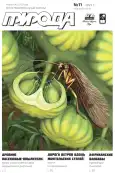African Baobabs of the Limpopo Province
- Authors: Semikolennykh D.V1
-
Affiliations:
- School of Geography, Archaeology and Environmental Studies, University of the Witwatersrand
- Issue: No 11 (2023)
- Pages: 39-47
- Section: Articles
- URL: https://journals.eco-vector.com/0032-874X/article/view/627862
- DOI: https://doi.org/10.7868/S0032874X23110042
- ID: 627862
Cite item
Abstract
African baobab is an extremely unpretentious tree with many useful properties. Its various parts are eaten, used in medicine, and in the manufacture of household products. Baobabs are of great importance to people living in dry areas. What are the reasons for baobabs to withstand extreme droughts, grow in unfavorable soils, quickly recover from damage, and live up to 2 thousand years or more? The answer to these questions lies in the tree’s internal structure: new “stems” appear inside the baobab as it grows. This phenomenon is observed only in trees of the genus Adansonia. In order to understand how the structure of the baobab changes with its age and how this aff ects its growth and life expectancy, we went to the northeast of the Republic of South Africa, to the Limpopo province, where the range of the African baobab begins.
About the authors
D. V Semikolennykh
School of Geography, Archaeology and Environmental Studies, University of the Witwatersrand
Email: dasha.semikolennykh@gmail.com
Johannesburg, South Africa
References
- Wickens G. E., Lowe P. The Baobabs: Pachycauls of Africa, Madagascar and Australia. Dordrecht, 2008.
- Patrut A., Woodborne S., Patrut R. T. et al. The demise of the largest and oldest African baobabs. Nat. Plants. 2018; 4(7): 423–426. doi: 10.1038/s41477-018-0170-5.
- Leong Pock Tsy J.-M., Lumaret R., Mayne D. et al. Chloroplast DNA phylogeography suggests a West African centre of origin for the baobab, Adansonia digitata L. (Bombacoideae, Malvaceae). Molecular Ecology. 2009; 18: 1707–1715. doi: 10.1111/j.1365-294X.2009.04144.x.
- Asogwa I. S., Ibrahim A. N., Agbaka J. I. African baobab: its role in enhancing nutrition, health, and the environment.Trees, Forest and People. 2021; 3: 100043. doi: 10.1016/j.tfp.2020.100043.
- Baumer M. Catalogue des plantes utiles du Kordofan (Républiqe du Soudan) particulièrement du point du vue pastoral. J. Agric. Trop. Bot. Appl. 1975; 22: 81–119.
- Plummer T. Flaked stones and old bones: biological and cultural evolution at the dawn of technology. American Journal of Physical Anthropology. 2004; 47: 118–164.
- Patrut A., Woodborne S., von Reden K. F. et al. African baobabs with false inner cavities: the radiocarbon investigation of the Lebombo Eco Trail baobab. PLoS ONE. 2015; 10: e0117193. doi: 10.1371/journal.pone.0117193.
- Patrut A., Woodborne S., von Reden K. F. et al. The growth stop phenomenon of baobabs (Adansonia spp.) indentified by radiocarbon dating. Radiocarbon. 2017; 59: 435–448.
- Patrut A., Woodborne S., Patrut R. T. et al. Age, growth and death of a National icon: The historic Chapman baobab of Botswana. Forests. 2019; 10(11): 983. doi: 10.3390/f10110983.
- Patrut A., Garg A., Woodborne S. et al. Radiocarbon dating of two old African baobabs from India. PLoS ONE. 2020; 15: e0227352. doi: 10.1371/journal.pone.0227352.
- Patrut A., Patrut R. T., Rakosy L. et al. Radiocarbon investigation of the big baobab of Outapi, Namibia. Studia Universitatis Babeș-Bolyai Chemia. 2021; LXVI: 153–163. doi: 10.24193/subbchem.2021.01.12.
- Patrut A., Patrut R. T., Rakosy L. et al. Radiocarbon investigation of the historic african baobabs of Omusati, Namibia. Forests. 2022; 13(11): 1899. doi: 10.3390/f13111899.
Supplementary files








